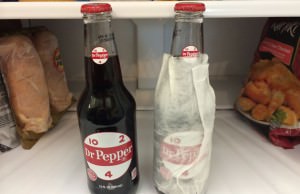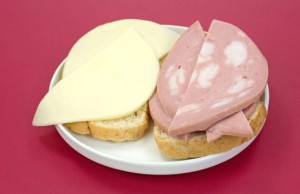21 Surprisingly Low-Fat Foods

When it comes to counting calories, there are many foods to choose from. In fact, there are quite a few options people don’t even consider simply because they don’t know about them.
Some foods may look like they are packed with calories when the truth is that they have fewer calories than the vegetables people so heartily defend. So, to shed some light on the matter at hand, here are 21 foods you didn’t know were low-fat:
1. Rice Cakes
Rice cakes are a phenomenal choice when you’re craving something crunchy between meals. They will most probably satiate your craving without adding a significant number of calories to your existing mass. They come in many forms and if you can, try to lay your hands on some puffed brown rice cakes since these are an excellent source of whole grains and those much-needed carbohydrates that can give you all the energy you want.
Don’t think that you’ll be getting anything else from rice cakes other than grains and carbohydrates – there really aren’t many vitamins, minerals, or even fiber in this crunchy patty. However, if you’re looking for a snack that you can eat without the fear of gaining weight, rice cakes should definitely be your top choice. Try them with some ricotta cheese or blackberries on top – they’re delicious that way!

2. Spinach
Contrary to popular belief, cooking spinach actually increases its nutritional value. Half a cup of cooked spinach will give you three times as much nutrition as a single cup of raw spinach.
However, freezing spinach significantly reduces its health benefits, so make sure you eat or even drink it fresh. Research shows that putting spinach in a blender and actually drinking it in a smoothie is the healthiest way to consume it, especially when blended with other vegetables. It’s low-calorie and low-fat, containing only 0.4 grams of fat and 23 calories per 100 grams.
Another thing many people don’t know about spinach is that it’s very good for your skin. Consuming this leafy vegetable on a regular basis will supply you with an array of vital vitamins and minerals for rejuvenating your itchy, dry skin. It’s also a good source of protein for vegetarians and it’s packed with vitamins C and A.

3. Turkey Breasts
Not every meat has to come loaded with calories – when it comes to preparing your lunch sandwich, turkey breasts are one of the best choices as far as the meat you’ll be putting inside is concerned. Feel free to eat as much as turkey breasts as you want since these are certainly one of the leanest meats you can find in the supermarket. Just make sure to avoid the added sugars that sometimes come with turkey breasts – look for the ones that aren’t honey-roasted.
Turkey breasts go well with all kinds of vegetables, and that’s why they are often the main ingredient in healthy sandwiches, but they can be much more than that. Here’s a quick recipe for a snack you have to try: slice some carrots, zucchini, and cucumber into matchsticks, then spread some Dijon mustard on the turkey slices, top with the sliced veggies and roll.

4. Popcorn
Although you might find it hard to believe, popcorn is one of those snacks you can enjoy after work without worrying about your waistline. When you prepare them with the right ingredients, popcorn is actually quite low in calories, good for your heart and full of healthy nutrients. Also, since popcorn has so much volume, don’t be surprised if they fill you up rather quickly while still containing fewer calories than most snack foods.
Remember, there’s more than one way to prepare your popcorn – you don’t always have to cover them in pounds of butter or put tons of salt on top. Why not try an Asian-inspired snack we guarantee you will like? Mix together 1 teaspoon of curry powder, 1 teaspoon dried basil, 1/8 teaspoon cayenne, just ¼ teaspoon salt, and 1 grated zest of lime. Add the mixture to the popcorn and thank us later.

5. Pork Tenderloin
Despite popular belief, pork doesn’t necessarily have to be high in calories – it all depends on the specific part of pork you are eating. Pork tenderloin, for instance, is relatively low in calories when compared to some other meat types; a 3-ounce portion, with all the fat removed, contains just slightly over 90 calories.
About three-quarters of these calories come from the tenderloin’s 18 grams of protein, and we all know just how vital protein is to our development and functioning. Pork tenderloin also has about 1.8 grams of fat per each serving, which is approximately 17 percent of its calories. This fat is paramount in absorbing the vitamins from your food and also plays an important role in providing the energy required in order to live an active lifestyle.

6. Turkey Legs
When you hear the word “turkey,” you probably think about all the tasty drumsticks you had the chance to eat during holiday celebrations over the years. This low-calorie cut of poultry not only comes with a delicious flavor but also supplies an impressive 16 grams of protein in a mere 3-oz. serving, boosting your muscle growth. Just make sure to remove the fatty skin from your turkey since what we just said about the calories applies only to the meat, not the skin.
When preparing turkey legs, remember to always braise them in liquid – this way, you will convert an incredible amount of connective tissue to gelatin. This will help lubricate the meat even further, making it as tender as a cloud and so juicy you’ll be smacking your lips uncontrollably.

7. Coffee
Now here’s a treat for those of you who really like your caffeine. When it comes to drinks, black coffee is about as low-calorie as you can get (in fact, it literally has no caloric value, it has “zero calories”), and it is an incredible metabolism booster, which is obviously great for weight loss.
It goes without saying that it is completely fat-free and also sugar-free, as long as you don’t sweeten it. Contrary to popular belief, coffee does not lead to dehydration when consumed in moderate amounts. A study revealed that coffee drinkers are at a lower risk of getting liver and colon cancer as well as type 2 diabetes and Parkinson’s disease.
It’s important to note, however, that too much coffee can lead to anxiety symptoms and, therefore, should be consumed in relatively limited amounts. Consider limiting your daily coffee intake to six cups and you should be fine.

8. Yogurt
Yogurt is basically curdled milk, much like sour cream and creme Fraiche, but with less fat. It’s also a perfect example that we can actually use bacteria for good. Although many people would assume that something as thick and heavy as yogurt is monstrously high in fat and calories, it actually isn’t. 100g of yogurt has about 160 calories less than 100g of McDonald’s Cheeseburger, and there are also low-fat variants, offering a slightly different taste with far fewer calories.
Yogurt is unbelievably healthy too – apart from having the ability to boost your immune and digestive health, it can even be a powerful ally in the battle of the bulge! And not to mention that it goes well with a lot of foods. For instance, place half a cup of plain yogurt, half an avocado, 1 tablespoon lime juice, ¼ teaspoon chipotle powder, and just a pinch of salt in a container and blend the mixture until smooth. You can use it as a sauce for tacos, or even fish.

9. Eye Of Round Steak
If you’re looking for a nice cut of beef that won’t go over your calorie limit, look no further than the eye of round. It’s the part of meat near the rear legs of the cattle, also known as the “round,” and has a phenomenal 6-to-1 protein-to-fat ratio.
This basically means that it will help you pack on muscle much better and faster than some other types of meat. Coming with 100 calories per 3 oz., it definitely stays within the calorie safe zone, and it’s also a fairly economical cut of meat to purchase.
Eye of round steak packs a healthy punch too – it has a moderate amount of iron, which helps with the production of myoglobin and hemoglobin (this helps transport oxygen to muscles and the rest of the body), and it’s rich in zinc, selenium, and vitamin B. It also contains two of the three macronutrients – a 5 ounce serving has 41 grams of protein and 7 grams of fat.

10. Cheese (Part Skim)
If you eat too much fatty cheese rich in calories, don’t be too surprised when your six-pack runs a few cans short along the way. However, if you simply can’t live without cheese, don’t worry, there are many types of cheese and some of them even contain an amazingly low amount of calories.
For example, ditch the regular cheddar cheese and go for part skim mozzarella – it has about 61 percent fewer calories, which definitely makes a difference. Try combining it with other ingredients in recipes to get used to the slightly different taste; you can try putting it in tacos, scrambled eggs, sandwiches, and pizzas.
The cool thing is, even if you opt for part skim cheese, you won’t miss out on any of its numerous health benefits. Each half-cup serving provides about 14 grams of protein, and roughly 6.4 grams of carbohydrates, which is more than useful for your body since it helps with fueling both your cells and your tissues.

11. Broccoli
Often called a superfood (and with good reason), broccoli has an amazingly low-calorie count and it is packed with nutritious elements for your body, including fiber, vitamins, minerals and even protein. You’ll also be happy to know that it has only 55 calories per cup.
Like brussel sprouts, broccoli is rich in antioxidants which are recommended for reducing the risks of breast cancer and colon cancer. It’s extremely high in vitamin C and vitamin K, which is essential for cardiovascular health. Broccoli has a strong effect on the body’s detox system, which means it’s great for removing all the unhealthy chemicals and otherwise unwanted elements from your body.
The preferred way to prepare broccoli is by steaming: it is super easy and doesn’t remove any of the above-mentioned nutrients from the vegetable. Broccoli’s odd smell can put some people off (especially kids), but if you can stomach the smell, it’s actually pretty tasty and can be used in a variety of dishes.

12. Mussels
Like you needed more excuses to dig into a bowl full of mussels, yeah right. But anyway, with 10 grams of high-quality protein in a single serving, it’s one of the best protein-to-calorie ratio foods you can find out there.
Not only that, they are also very inexpensive, making them one of the most sustainable choices when it comes to seafood – not to forget that they also come with a substantial dose of those unbelievably healthy omega-3 fats. Mussels give you about 73 calories per 3 oz., which really makes them a good choice if you’re looking for food that can fill you up without making you fat.
Studies suggest that getting your weekly fill of omega-3 fats undeniably helps with bolstering your exercise performance by improving blood flow and maximum oxygen uptake. Mussels are also high in B12 vitamins and provide a readily absorbed source of many other vitamins, amino acids, and various minerals including iron, phosphorus, potassium, selenium, and zinc.

13. Brussel Sprouts
Brussel sprouts are very low in fat and high in phytonutrients and fiber, both of which are effective in preventing cancer. They often get a bad rap because of their weird smell and are frequently called “little cabbages,” but the truth is that these veggies are one of the healthiest foods you can eat.
Like most green vegetables, these are high in vitamin C, which is essential for a healthy and powerful immune system as well as for normal growth and development. Half a cup of brussel sprouts can give you 48,8 milligrams of vitamin C, which is 50% of what you need every day.
They’re also a rich source of cancer-preventing antioxidants as well as folate, which is a B vitamin. For vegetarians that are concerned about protein intake, brussel sprouts are a good source of that too, containing 3.4 grams of protein per 100 grams.

14. Asparagus
Just like broccoli, asparagus has forever been known as a detoxifying food because of the high levels of a certain protein that can speed up your metabolism and flush extra water out of your system. For those of you who like to enjoy a drink or two on the weekends, this means that asparagus is very good for a hangover!
Aside from that, it’s packed with vitamin A (essential for keeping good eyesight later in your life), vitamin C, vitamin E, and K and also contains a relatively high amount of protein and iron. The best thing is that it can be eaten with almost anything, it can be steamed, put in salads, or even eaten raw like a carrot.
And sporting an amazingly low 27 calories per cup, this means that the average person could eat 30 cups of asparagus per day and not even fill up half of their recommended daily calorie intake. And that’s a lot of cups of asparagus!

15. Lettuce
This is a vegetable that you can literally eat all day in nearly unlimited amounts as it contains very little calories. Not only that, it’s a great source of vitamin B, manganese, and folic acid, micronutrients which are essential for keeping your blood sugar levels stable and your immune system strong. A single cup of lettuce contains only 9 calories, 1.3 grams of fiber and 1 gram of protein. It is also a moderately good source of iron, copper, vitamin C and copper.
When preparing lettuce, one thing to keep in mind is not to slice or cut the leaves in advance, but to prepare them just before you want to eat them. You should do this because cutting the leaves releases an ascorbic acid that destroys the precious vitamin C contained in the lettuce. All in all, lettuce is one of the best vegetables you can eat, and not only if you’re on a diet.

16. Beets
If you’re craving something sweet, don’t immediately reach for a low-fat candy bar or a diet soda – consider beets. Beets are naturally sweet and have very few calories, so you can have a guilt-free sweet snack.
They’re an excellent source of energy, which can be a lifesaver when dieting and trying to cut down on calorie-high foods. Beets are also full of healthy nutrients such as antioxidants and they are high in fiber, potassium and iron. Consider putting them in a salad or a pasta dish as this is a great way to add some extra nutritional value without worrying about calories.
In a recent study, beet consumption was even linked with reducing tumor cell growth in stomach and colon cancers and even lung cancer. And for you guys out there, take note that the ancient Romans used beets as an aphrodisiac!

17. Mushrooms
Often mistaken for vegetables, mushrooms are a member of the Fungi family, the same as yeast and mold. Mushrooms come in many varieties, but the one thing that all of them have in common is that they’re very low-cal, low-fat and high in protein, which is great for keeping you full. They’re great for your immune system as well, containing antioxidants, potassium, B vitamins, and fiber.
Aside from this, all mushrooms are good sources of copper, thiamin, vitamin D and riboflavin, essential micronutrients for your skin, cardiovascular health and much more. Because they are high in fiber, mushrooms are a great food choice for type 1 diabetics and people with heart problems. And though they contain some sodium as well, it comes in very small amounts and poses virtually no risk for those worried about their cardiovascular health.

18. Tomatoes
With only 22 calories per cup, tomatoes are fruits you should definitely incorporate into your diet. They are a nutrient-dense superfood people should eat on a daily basis due to the fact they are packed with antioxidants, potassium, vitamin C and fiber.
Tomatoes are the go-to food for lowering blood pressure because of their high potassium levels, and the antioxidants they contain are responsible for limiting the amount of free radicals in our bodies, which are known to cause cancer. An interesting fact about the tomato is that it was thought to be poisonous in the U.S. only 200 years ago because it belongs to the nightshade family of which some species really are poisonous to humans.
Tomatoes are high in water content, and anyone who has ever tried tomatoes probably knows this. Foods high in water content and fiber can keep hydration levels in balance and prevent constipation, keeping your bowel movements regular.

19. Zucchini
Containing just 20 calories per cup, zucchini is the ultimate high-volume food, which means you can get full on very few calories. It’s a great way to satisfy your appetite without reaching for high-carb foods since zucchini is mostly water.
The squash is also low in fat and contains vital micronutrients such as magnesium, potassium and vitamin A. Because of its rich nutritional value and an abundance of manganese and vitamin C, it helps keep the heart strong and healthy and prevents diabetic heart disease and atherosclerosis. Due to the vitamin folate, zucchini lowers the risk of heart attacks and strokes.
According to various research, consuming zucchini is great for your overall health, so make sure to incorporate it into your diet and eat it at least once a week. When preparing zucchini, it’s important to salt it in order to remove excess water, and it is best not to peel it as the skin itself contains nutrients such as beta-carotene (which is a powerful antioxidant).

20. Pickles
Pickles are a fantastic, guilt-free choice when you’re looking for a way to satisfy your munchies for something salty and crunchy. They are also super easy to prepare and serving them usually doesn’t take too much of your time (unless you break the jar or something). Basically, all you need to do is slice your cucumber and douse it in some rice vinegar. That’s it!
The great thing about pickles is how safe they are if you’re careful about your calories – they only have about 16 calories per cup and the rice vinegar, which makes them so tastefully divine, only adds a single calorie per teaspoon. Pickles are also a very good source of probiotics and are packed with antioxidants which prevent these pesky chain reactions that can cause damage to your cells.

21. Garlic
With an amazingly low 4 calories per clove, garlic is one of the most used ingredients in a variety of meals because of its flavor. The health benefits of garlic are numerous, from fighting colds to warding off urinary tract infections.
This is thanks to its natural antimicrobial properties and its high concentration of a compound called allicin, which acts as a poison for microbes and is also responsible for its potent smell. The active compounds in garlic are effective in reducing blood pressure, so it’s not surprising that even pharmacies are producing pills that contain garlic nowadays.
Garlic is packed with antioxidants that can help prevent Alzheimer’s disease and dementia, according to several studies. Moreover, research has shown that garlic is potent at fighting acne because of its antibacterial properties. Its potent odor is the main downside to consuming garlic, but when compared to its many benefits, it’s definitely worth the smell once in a while.









